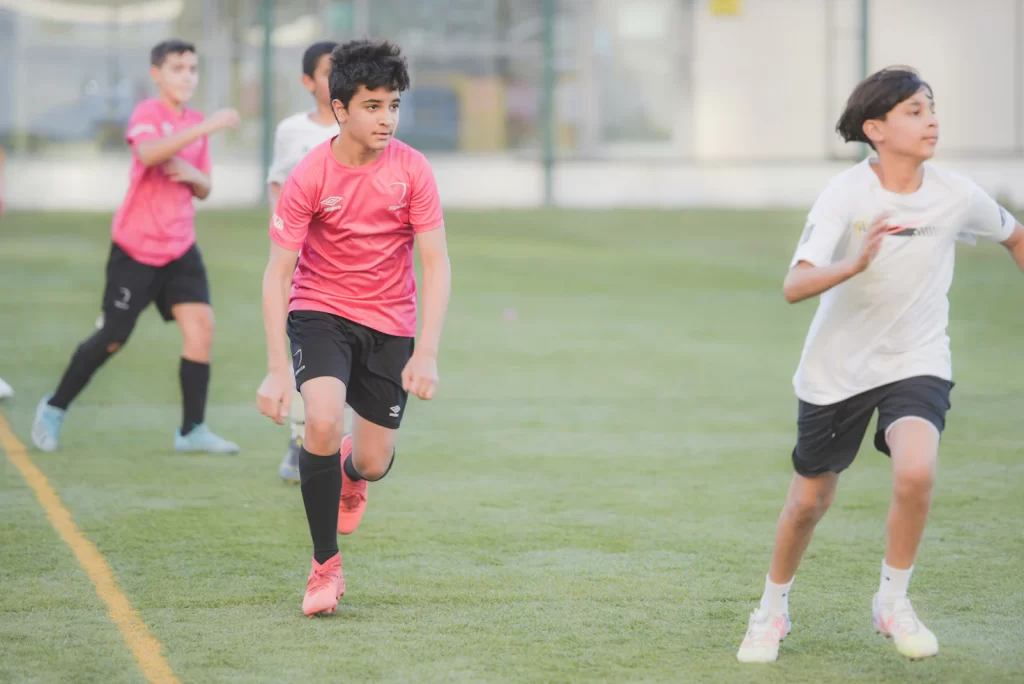Common lower limb injuries in young athletes
Posted on February 5th, 2024 by Andries Lodder
BY: Gcina Gumede

Millions of kids across the globe are involved in youth sporting activities. It is a way for them to grow up fit and build friendships. Unfortunately, lower limb injuries are a common thing in sports and young athletes are prone to several sport related injuries.
Sport related injuries can halt a young athlete’s participation for week, months, or even up to a year depending on the severity of the injury. Although there is no full proof prevention method for injuries, understanding the needs of the sport that the young athletes are participating in can assist in preparing the athlete’s body for the sport.
Children are more prone to injuries because their bodies have not fully matured yet. They still have open growth plates (areas of weakness), their muscle, tendon, and ligaments are not as strong as those of adults which puts them at a higher risk of suffering from injury. Their coordination and balance are also still developing which can lead to instability, falls and other accidents.
Lower limb injuries in young athletes can be divided into two categories: acute injuries and overuse injuries. The knee joints the most injured joint in the lower limb of young athletes.
Acute injuries
Acute injuries are ones that happen suddenly. It could be from landing awkwardly, colliding with another athlete or from a sudden movement. They might lead to a ligament sprain or tear, a muscle strain or tear, a concussion or even breaking of a bone depending on the level of impact.
- Sprains and Strains: Sprains involve the stretching or tearing of ligaments, which connect bones to each other. Strains involve the stretching or tearing of muscles or tendons, which connect muscles to bone
- Fractures: Broken bones can occur due to impact, falls, or overuse. Growth plate fractures are of particular concern in youth athletes as they can affect bone development.
- Meniscus Tears: Tears in the meniscus, the cartilage in the knee, can occur due to twisting or direct impact.
- ACL Tears: Anterior Cruciate Ligament (ACL) tears are more common in sports involving sudden stops, changes in direction, or jumping.
- Meniscus Tears: Tears in the meniscus, the cartilage in the knee, can occur due to twisting or direct impact.
In an event of the unfortunate event of an acute injury, it is important to seek medical attention immediately in order to get a clear diagnosis.
Overuse injuries
Overuse injuries, also known as repetitive strain injuries or cumulative trauma disorders, occur when a particular part of the body is subjected to repetitive stress or strain without sufficient time for recovery. They build over time until they get to a point where they hinder an athletes performance. These injuries are common in various activities and can affect muscles, tendons, ligaments, and other soft tissues.
Some common lower limb injuries include:
- Tendonitis: Inflammation of a tendon, which connects muscle to bone. Common types include Achilles tendonitis
- Stress fracture: Microscopic cracks in bones caused by repetitive stress. These are common in runners and athletes involved in high-impact sports.
- Shin splints: Often caused by overuse or excessive strain on the shinbone and the tissues attaching the shinbone to the muscles surrounding it.
- Osgood Schlatter’s: Primarily affects adolescents, especially those who are physically active, particularly in sports that involve running and jumping. It typically occurs during a growth spurt, when the bones, muscles, and tendons are rapidly developing. For instance, the bones of the individual could be growing at a faster rate than that of the muscles; this could cause the individual to be in a constant state of pain during activity. It is important for the young athlete to develop their muscles to counteract this condition and manage their load.
If overuse injuries are suspected, it’s important to seek medical attention. Rest, ice, compression, and elevation (R.I.C.E.) can be initial measures to manage pain, but professional evaluation may be necessary for a proper diagnosis and treatment plan.
To prevent injuries, youth athletes should incorporate the following strategies:
- Proper Warm-Up and Cool Down: Always warm up before engaging in physical activity, and cool down afterward to help the muscles recover.
- Gradual Progression: Increase the intensity, duration, or frequency of activities gradually to allow the body to adapt.
- Cross-Training: Mix different types of exercises to reduce the strain on specific muscle groups and joints.
- Proper Technique: Use proper form and technique during physical activities to reduce the risk of injury.
- Rest and Recovery: Allow adequate time for rest and recovery between sessions. Listen to your body and address any signs of fatigue or discomfort promptly.
- Strength Training: Include strength training exercises to improve the overall strength and stability of muscles and joints.
In summary, addressing lower limb injuries in young athletes requires a comprehensive approach focused on injury prevention, proper training, and early intervention. By fostering collaboration among coaches, parents, and healthcare professionals, we can mitigate the impact of these injuries. This will allow young athletes to pursue their sports with reduced risk and enhanced well-being.
Please free to contact if you have any question and we will be more than happy to assist you.
Tweet